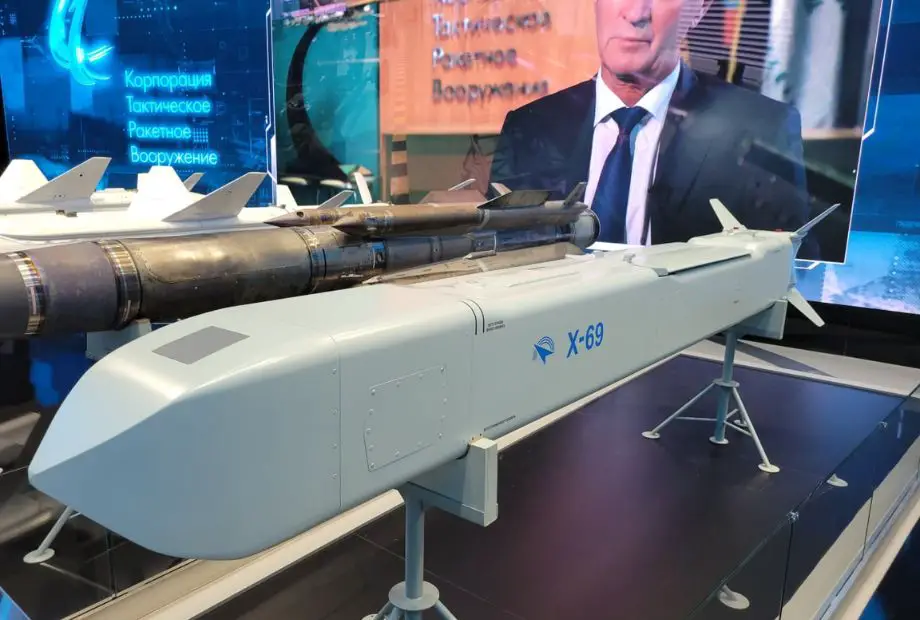On the morning of April 11, 2024, the Russian Federation launched an attack on the Trypillia Thermal Power Plant using the newly deployed Kh-69 cruise missile, as indicated by debris found at the site, according to Defense Express. The Kh-69, recently introduced into service by Russian forces, remains somewhat enigmatic with few details disclosed about its combat capabilities, including range and warhead type. Here's a closer look at what is known about this missile.
Follow Army Recognition on Google News at this link

The KH-69 cruise missile was unveiled in 2022 during a defense exhibition in Moscow, Russia. (Picture source Russian MoD )
In February 2024, it was already mentioned that Russia had started using them to strike Ukraine, and isolated cases of use were reported in 2023. Later, this unofficial information was confirmed thanks to the publication of the Kyiv Scientific Research Institute of Forensic Expertise (KNRIFE) on the study of Kh-69 debris.
The Kh-69 is a Russian subsonic cruise missile for tactical aviation aircraft. It is launched from Su-34 and Su-35 aircraft. Moreover, it is intended to become the main cruise missile for the Su-57.
Available data on the missile up to now indicated a range of up to 290 kilometers, but in practice, it turned out to be greater. The weight of the warhead was declared to be within 310 kilograms. The missile guidance system, according to declarations, is similar to that of the Kh-101: satellite navigation with jam-resistant antennas Kometa-M antennas, as well as inertial. Its main feature is the ability to fly at very low altitudes at a height of 20 meters, which is lower than the capabilities of the Kh-101.It is interesting that although the missile is subsonic and has a smaller warhead than the hypersonic Kh-47M2 Kinzhal, the use of it for a strike against the Trypillia TPP can be considered a worse scenario.
The results of its strikes indicate its capability to penetrate the depleted Ukrainian air defenses. Secondly, launching the missile from an aircraft negates the characteristic feature of large-scale missile attacks, where the takeoff of strategic bombers Tu-95MS and MiG-31K is detected.
Launching it from a Su-34 or Su-35 aircraft may suggest a more massive character due to the greater number of carriers. However, this is possible if Russia establishes its serial production. The missile's range of 400 kilometers is sufficient to strike a significant number of targets on the territory of Ukraine from tactical aviation aircraft, that may well approach the border or the front line at a distance of 50-70 km.
Ukrainian army considers the KH-69 worse than the Kinjal hypersonic missile, to conclude KH-69 seems to be more accurate, and harder to intercept for air defense systems.
The target of April 11, 2024, airstrike at the Trypillia thermal power plant was completely disabled. The Trypillia Thermal Power Plant holds significant strategic and economic importance for Ukraine, particularly following the decommissioning of the Chernobyl Nuclear Power Plant. Situated near Kyiv, Trypillia serves as a critical infrastructure node, providing a substantial portion of the electricity supply to the capital region and its surroundings. Its position enhances its role in stabilizing the national grid and compensating for the power previously supplied by Chernobyl. this station with its production of 1800MW was one of the most important thermal plants in Ukraine since the closure of Chernobyl in 2000.
Defense News April 2024
















